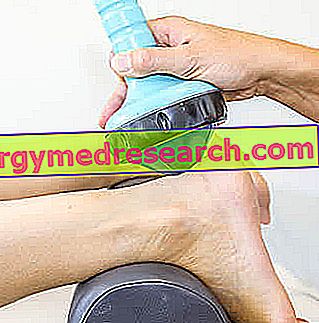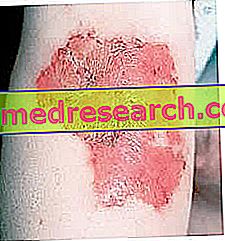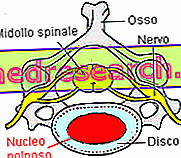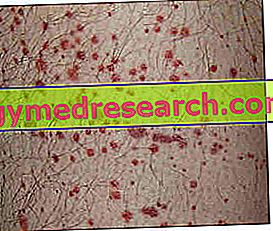Generality Internal knee pain is a very common symptom, which may depend on various conditions. The causes of internal knee pain include: knee osteoarthritis, medial collateral ligament injuries, medial meniscus injuries, rheumatoid arthritis, goose leg bursitis or anserine bursitis, syndrome of the mid-patellar plica and medial knee bruises
Category traumatology
Osteoarthritis (osteoarthritis) is a degenerative arthropathy. It is a joint disease that causes the progressive loss of the anatomical parts typical of the joints. It can affect the spine, hips, upper and lower limbs. Osteoarthritis causes wear of the articular cartilage and replacement of the chondroid tissue with the bone tissue
Tendon calcification is a tendinopathy; it is a degenerative process that affects the tendons of the striated muscles (especially the larger ones) and which consists in the sedimentation of bone mineral on the surface of the tendon connective tissues. The primary cause of calcification is chronic inflammation
Watch the video X Watch the video on youtube Ankle sprain is a trauma that affects the joint between the leg and the foot. It is one of the most frequent injuries in sports (volleyball, basketball, football, rugby, athletics etc.), but also in everyday life. The ankle sprain is a lesion that mainly affects the ligaments, but sometimes it does not spare the muscles and tendons
Rotator cuff is the name commonly used to indicate the shoulder muscle complex, the most mobile joint in the human body. This joint is as complex as it is delicate, and is included in the list of the joints most prone to injury and degradation. In addition to bone and ligament discomforts (arthrosis, arthritis, fractures, distortion, dislocation, etc
Excoriations are minor traumatic lesions of the skin, involving superficial epidermal layers. As a result of rubbing against rough surfaces, or insults from blunt objects, the skin suffers an injury and, tearing itself, produces more or less important excoriations. The deepest excoriations assume the connotation of abrasion or wound
Epicondylitis is the generic term used to indicate a painful syndrome that affects the elbow area. Due to the high incidence in tennis, the epicondylitis is also nicknamed " tennis elbow ". It consists of painful inflammation of the tendons and / or the extensor muscles of the forearm on the lateral epicondyle (near the insertion)
Cervical hernia (more precisely defined as a hernia of the cervical disc ) is a leakage of more or less extended portions of jelly discal substance from its natural anatomical borders. Cervical hernia is a protuberance of the intervertebral disc that compresses the nerve roots directed to an upper limb and, sometimes, also the spinal cord
"Lumbago" is the more correct term to indicate back pain, a disorder as common as it is annoying, which recognizes numerous and heterogeneous causes of origin. Back pain is a suffering that affects individuals of every race, age and social rank. The perceived pain can be acute or chronic, intermittent or continuous, disabling or bearable, and can be accentuated or attenuated by performing certain movements
The petechiae are microhematomas smaller than 3 mm in size, the result of blood leaking from the small blood ducts (capillaries). These are small punctate hemorrhages which, together with purpura and ecchymoses, represent superficial bleeding in the skin or mucous membranes, without external emission of blood
Pubalgia is a generic term, used to indicate the pain syndrome that affects the groin, the pubis and the inner thigh (only one or the combination of the three sites). Most pubalgia cases are caused by repeated trauma. A minority is caused by a single very intense event. In general, acute tendon and muscle impairments do not require the in-depth examination of any predisposing causes, as is the case with pubalgia proper










